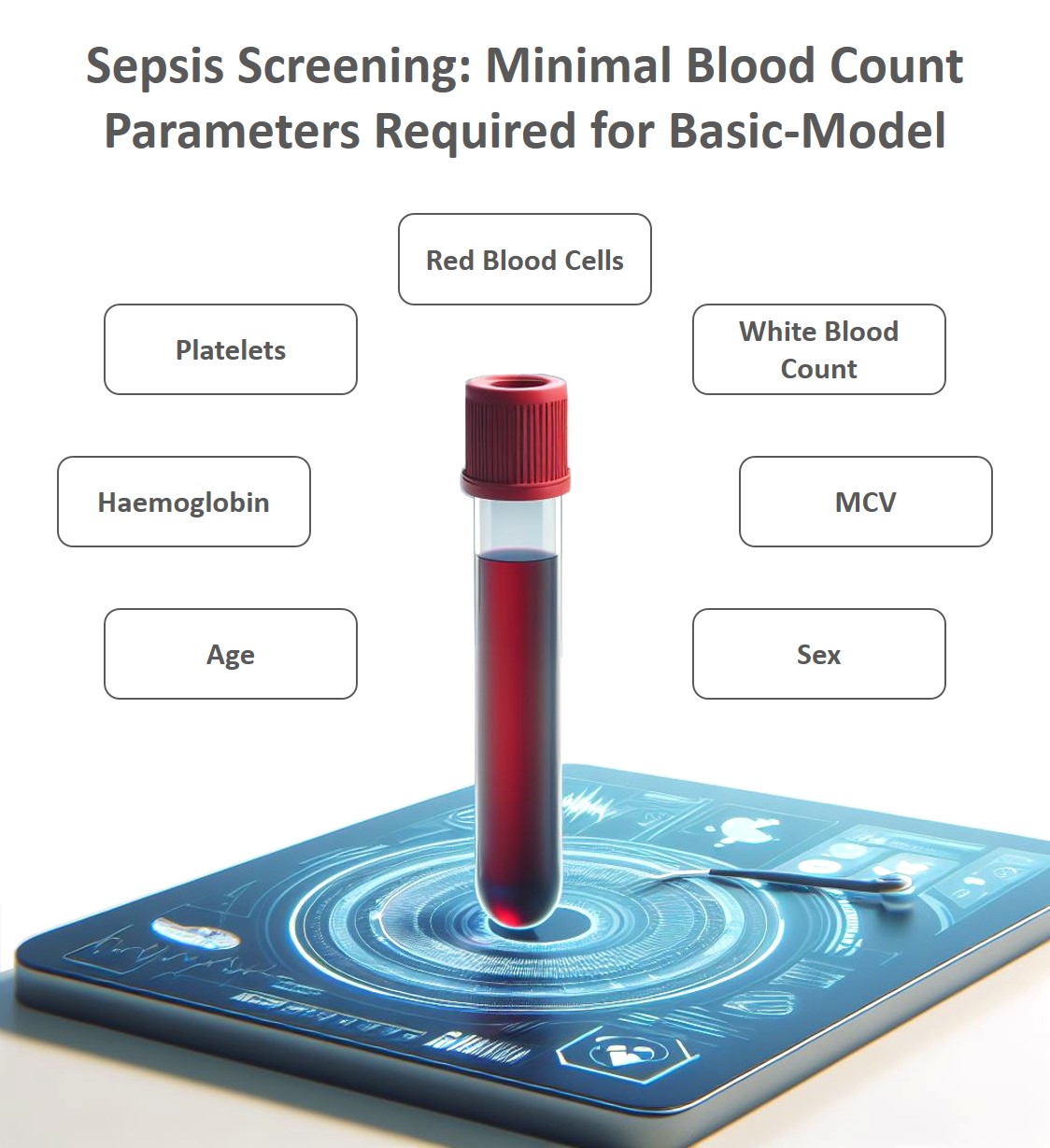Status: Development
When sepsis occurs, the pathogens of the infection must be quickly identified and treated. The later the therapy begins, the higher the risk of mortality. Therefore, the main task of the Sepsis-AMPEL is to detect the onset of sepsis as early as possible and ensure appropriate follow-up of diagnosis and therapy.
Detecting sepsis in clinical routine data is very challenging. New perspectives are provided by artificial intelligence methods, which can recognize complex patterns in the data. Each sepsis that is detected prematurely through this method contributes to an earlier diagnosis and improves the standard of care.
 *Presentation of the data required for the basic model for early sepsis detection; MCV: mean corpuscular volume
*Presentation of the data required for the basic model for early sepsis detection; MCV: mean corpuscular volume
Routine laboratory data serves as basis for the AI in the Sepsis-AMPEL. These data are not only available very early during hospital admission but also contain significantly more information than previously assumed. Contrary to their own expectations, the AMPEL team demonstrated that even a small set of data from the complete blood count is sufficient to detect sepsis earlier than before.
The basic model of the Sepsis-AMPEL, based on the complete blood count, was successfully validated using data from the University Medicine Greifswald and the Beth Israel Deaconess Medical Center (Boston, USA). Building upon this foundational model, individual, site-specific AI models can be trained. Thus, more precise sepsis early detections can be reached.
 *Overview of patient distributions before and after filtering by the AMPEL AI screening. The general basic model can be used to filter the majority of patients without sepsis. In a second step, the site-specific model (under development) reduces unnecessary alarms.
*Overview of patient distributions before and after filtering by the AMPEL AI screening. The general basic model can be used to filter the majority of patients without sepsis. In a second step, the site-specific model (under development) reduces unnecessary alarms.
The benefits of AI screening of the blood count are substantial, especially in emergency departments, where 60-80% of all sepsis patients present themselves. In almost all cases, a blood count is taken, and since it involves routine data, there are no additional costs.
Building on these promising results, the AMPEL team continues to develop the AI model and tests whether the early warning system indeed leads to more sepsis patients surviving. As an independent and non-profit research project, the Open Source AMPEL provides all results, data, and AI models freely available.
> Press release Sepsis-AMPEL
> Return to the "Models" overview
